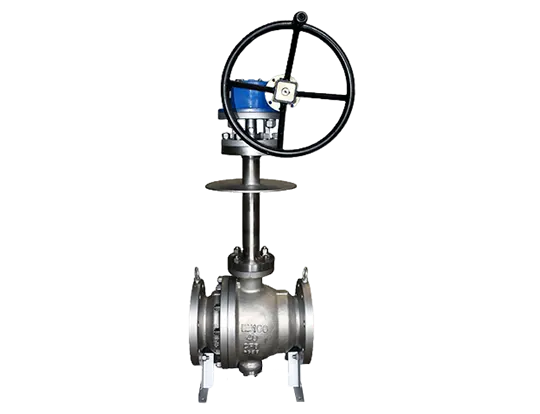- English
- Español
- Português
- русский
- Français
- 日本語
- Deutsch
- tiếng Việt
- Italiano
- Nederlands
- ภาษาไทย
- Polski
- 한국어
- Svenska
- magyar
- Malay
- বাংলা ভাষার
- Dansk
- Suomi
- हिन्दी
- Pilipino
- Türkçe
- Gaeilge
- العربية
- Indonesia
- Norsk
- تمل
- český
- ελληνικά
- український
- Javanese
- فارسی
- தமிழ்
- తెలుగు
- नेपाली
- Burmese
- български
- ລາວ
- Latine
- Қазақша
- Euskal
- Azərbaycan
- Slovenský jazyk
- Македонски
- Lietuvos
- Eesti Keel
- Română
- Slovenski
- मराठी
- Srpski језик
How can Cryogenic Ball Valves improve
2024-09-25

What are the benefits of Cryogenic Ball Valves?
Cryogenic Ball Valves offer several advantages over traditional valves. These include: 1. Resistance to low temperatures - As mentioned earlier, Cryogenic Ball Valves are designed to handle extremely low temperatures without sustaining any damage. This makes them more effective and efficient than regular valves in low-temperature environments. 2. Low maintenance - Cryogenic Ball Valves require less maintenance than other valves, making them a cost-effective option for companies looking to reduce costs. 3. High performance - Cryogenic Ball Valves have been engineered to deliver outstanding performance, even in harsh environments, and can operate at very high and low pressures.What are the applications of Cryogenic Ball Valves?
Cryogenic Ball Valves are used in a variety of industries, including: 1. Space exploration - Cryogenic Ball Valves are used in the aerospace industry to handle liquid or gaseous oxygen, nitrogen, and hydrogen. 2. Petrochemicals - Cryogenic Ball Valves are used to control the flow of gases and liquids in refineries and chemical plants. 3. Natural gas - Cryogenic Ball Valves play a crucial role in regulating the flow of natural gas in pipelines and storage tanks. So, as you can see, Cryogenic Ball Valves are incredibly versatile and can be used across a wide range of industries.Conclusion
Cryogenic Ball Valves are essential components in industries that deal with materials at extremely low temperatures. They offer numerous benefits over traditional valves, including resistance to low temperatures, low maintenance costs, and high performance. A company that specializes in manufacturing such valves is Zhejiang Liangyi Valve Co., Ltd. They offer a wide range of high-quality, reliable Cryogenic Ball Valves as well as other valve types. If you are looking for a reliable supplier, you can contact Zhejiang Liangyi Valve Co., Ltd. at sales@gntvalve.com.
Here are some related research papers on Cryogenic Ball Valves that might be of interest:
- H. H. Oh and H. J. Kim (2014). "Design and Analysis of Seat Leakage Criteria for Cryogenic Ball Valves." Journal of Mechanical Science and Technology 28 (3): 737-743.
- R. P. Liu (2015). "Research on the Sealing Performance of Cryogenic Flange Ball Valve." Applied Mechanics and Materials 730: 450-455.
- M. Tal and H. Patel (2018). "Study on Cryogenic Operation of Ball Valve." International Journal of Recent Technology and Engineering 6 (3S9): 168-174.
- K. R. Kim et al. (2020). "Development of an Underwater Actuated Cryogenic Ball Valve for Marine Gas." Journal of Offshore Mechanics and Arctic Engineering 142 (3): 031801.
- A. Gheorghiu and A. E. Aldea (2016). "Design and Analysis of a Cryogenic Ball Valve." Theoretical and Applied Mechanics Letters 6 (3): 119-125.
- S. S. Hon and Y. C. Lin (2013). "Cryogenic Ball Valves for Liquid Hydrogen." Advances in Mechanical Engineering 5: 701502.
- J. Y. Chen et al. (2017). "Leakage characteristics of cryogenic ball valves for liquid hydrogen." Vacuum 146: 798-802.
- Y. L. Liu and C. R. Chiou (2011). "Design of Low-temperature Ball Valve for Liquefied Natural Gas." Journal of Marine Science and Technology 19 (4): 515-523.
- L. Li et al. (2019). "Study on the Sealing Performance of Cryogenic Globe Valve and Cryogenic Ball Valve." Journal of Physics: Conference Series 1168: 032008.
- S. H. Li and J. F. Liu (2015). "The Dynamic Characteristics and Finite Element Analysis of Cryogenic Ball Valve." Applied Mechanics and Materials 753-755: 225-228.




